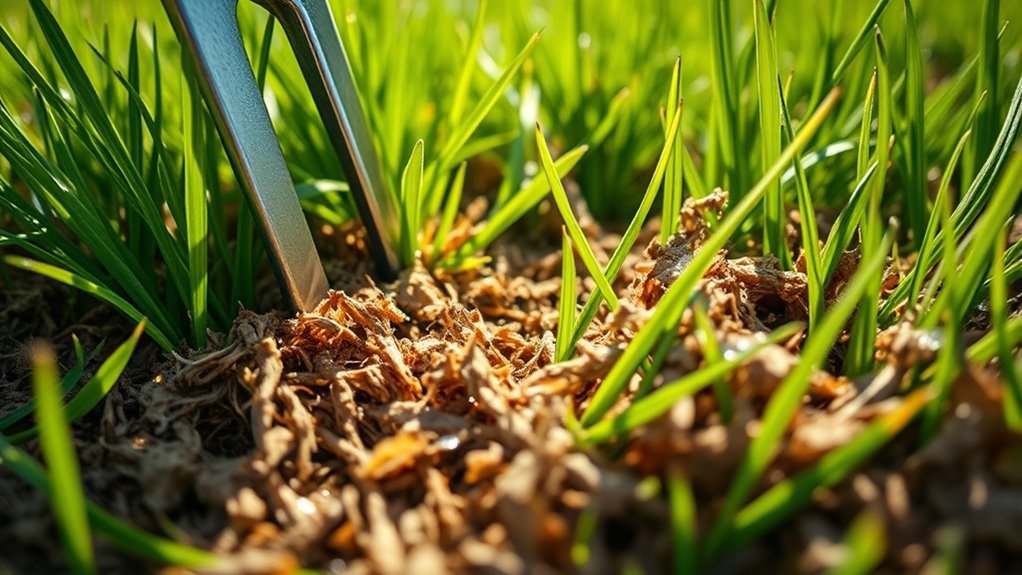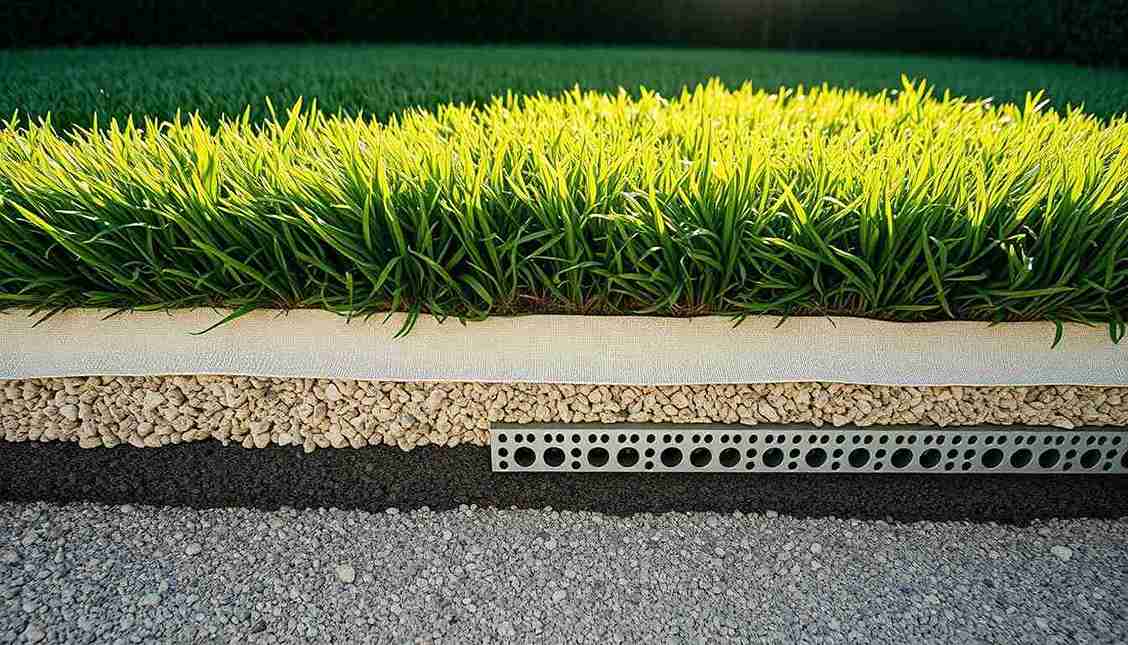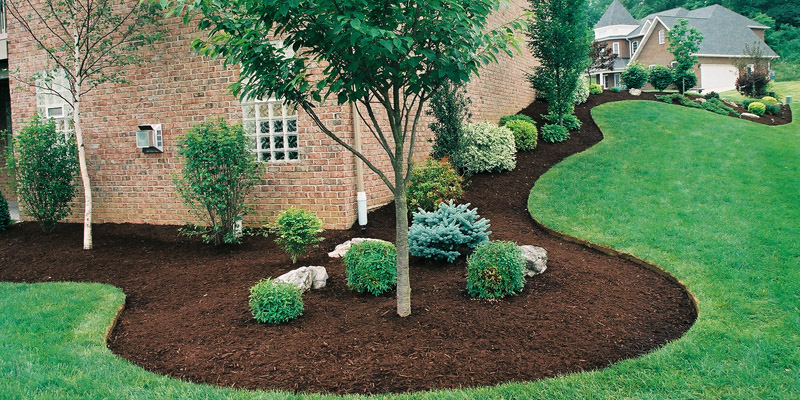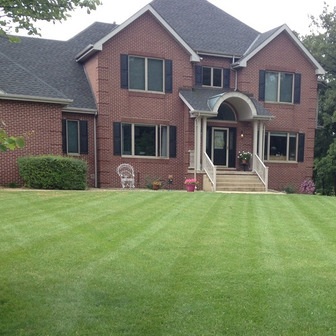Dethatch cool-season grasses (Kentucky Bluegrass, Fescue, Ryegrass) in early fall when soil temperatures are 45-70°F, allowing recovery before winter. Warm-season varieties (Bermuda, Zoysia, St. Augustine) need dethatching in late spring to early summer during active growth. Never dethatch during dormancy, drought, or when soil is saturated. Always wait until thatch exceeds ½ inch thickness and your lawn feels spongy underfoot. The timing difference between grass types directly impacts your lawn’s recovery success.
Understanding Thatch: Beneficial or Harmful for Your Lawn?
While many homeowners view thatch as an entirely negative element, the truth is more nuanced. Thatch—that layer of dead stems, roots, and plant debris accumulating between soil and green vegetation—serves essential functions when maintained at proper levels (¼ to ½ inch).
Optimal thatch composition provides natural insulation, protecting beneficial organisms and grassroots from temperature extremes. It acts as a biological filter, breaking down pesticides and preventing soil compaction. Your lawn’s ecosystem depends on this organic interface for moisture retention and natural decomposition processes.
However, excessive thatch (over ½ inch thick) restricts water penetration, creates habitat for pests, and blocks nutrients from reaching soil. This imbalance occurs when accumulation outpaces decomposition, typically in high-maintenance lawns with aggressive growth patterns.
Signs Your Lawn Needs Dethatching Regardless of Season
Recognizing when your lawn needs dethatching isn’t always tied to calendar dates but rather to specific indicators visible in your turf’s condition. You’ll notice visual warning signs such as a spongy feel when walking, grass that appears stressed despite proper care, or a visible layer of brown material between the soil and green vegetation. Poor water absorption, stunted growth patterns, and increased disease susceptibility further signal that excessive thatch has compromised your lawn’s ability to thrive regardless of the current season.
Visual Lawn Warning Signs
Several distinct visual indicators signal when your lawn requires dethatching, regardless of seasonal timing. Look for a spongy sensation underfoot when walking across your turf—this sponginess indicates excessive thatch accumulation above soil level. You’ll also notice water runoff rather than absorption during irrigation, as thatch creates an impermeable barrier between water and soil.
Critical thatch indicators include patches of dead grass amid healthy areas and difficulty pushing a screwdriver into the soil. Your lawn health deteriorates when grass roots grow within the thatch layer rather than soil, leaving plants vulnerable to drought and disease. The most definitive sign is measuring thatch thickness—anything exceeding ½ inch warrants immediate intervention. Color inconsistencies, such as brown patches that don’t respond to fertilization, further confirm dethatching needs.
Growth and Drainage Issues
Beyond visible surface symptoms, your lawn’s growth patterns and drainage performance provide definitive indicators of excessive thatch accumulation. When water puddles remain after irrigation or rainfall, thatch has likely formed an impermeable barrier preventing proper soil absorption. This hydrophobic layer necessitates immediate drainage improvement through dethatching.
Monitor your lawn’s response to fertilization. If applications fail to produce expected growth stimulation despite proper timing and formulation, excess thatch may be intercepting nutrients before reaching root zones. Furthermore, observe root development—shallow roots struggling to penetrate dense thatch layers signal dethatching needs.
Temperature fluctuations affect your lawn more severely when thatch exceeds ideal levels (½ inch). The organic mat either insulates excessively or fails to buffer against temperature extremes, compromising grass health regardless of your maintenance regimen.
Best Timing for Cool-Season Grass Dethatching

While homeowners often focus on mowing and fertilizing schedules, properly timing your dethatching is likewise critical for cool-season grass health. Cool-season grasses like Kentucky bluegrass, fescue, and ryegrass require specific timing tips to guarantee ideal recovery post-dethatching.
| Grass Type | Ideal Dethatching Period | Recovery Time | Core Temp. Range |
|---|---|---|---|
| Kentucky Bluegrass | Early fall (Sept) | 2-3 weeks | 50-65°F |
| Tall Fescue | Early spring/early fall | 3-4 weeks | 45-60°F |
| Perennial Ryegrass | Early fall | 1-2 weeks | 50-70°F |
| Fine Fescue | Early fall | 3-4 weeks | 45-60°F |
You’ll achieve ideal results by dethatching during these periods when grass actively grows but isn’t stressed by extreme temperatures. Plan your dethatching when soil moisture is moderate—never dethatch during drought conditions or when soil is saturated.
Optimal Dethatching Windows for Warm-Season Grasses
Unlike their cool-season counterparts, warm-season grasses require completely different timing for successful dethatching operations. For best results, implement dethatching techniques during late spring to early summer when these grasses enter their active growth phase. Specifically, dethatch Bermuda grass in May or June, Zoysia in June, and St. Augustine in early June.
This seasonal timing utilizes the grass’s vigorous growth period, enabling rapid recovery from the mechanical stress of dethatching. Avoid dethatching during dormancy periods (late fall through winter) when warm-season varieties lack the metabolic activity needed for recovery. Furthermore, never dethatch during drought conditions or extreme heat waves, as this compounds stress on the turf. For heavily thatched lawns, consider scheduling dethatching operations at the earlier end of the recommended window to enhance recovery time.
Spring Dethatching: Pros, Cons, and Grass-Specific Guidelines

As temperatures begin to rise and soil conditions improve, spring emerges as a primary dethatching season for many lawn varieties, particularly cool-season grasses. Timing is critical—aim for mid to late spring when your turf has exited dormancy but before summer heat stress begins.
Spring benefits include giving your lawn maximum recovery time before summer stressors and promoting vigorous seasonal growth. Newly exposed soil warms faster, accelerating root development and nutrient absorption.
Spring drawbacks warrant consideration: soggy soil can make the process difficult and potentially damage grass crowns. Kentucky bluegrass and perennial ryegrass tolerate early spring dethatching well, while fescues prefer mid-spring after establishing strong root systems. If you’ve missed the ideal window, it’s often better to wait until fall rather than risk summer heat stress.
Fall Dethatching: Why It Works for Many Lawn Types
Fall dethatching provides your lawn with ideal recovery time before winter dormancy while simultaneously preparing it for colder months ahead. Your grass will benefit from increased nutrient absorption as removing the thatch layer allows fertilizers, water, and oxygen to reach the root zone more effectively. This strategic timing works particularly well for cool-season grasses, which experience their second growth peak in autumn and can quickly repair themselves after the mechanical stress of dethatching.
Ideal Recovery Time
While spring dethatching remains popular among homeowners, the autumn season provides ideal recovery conditions for most lawn types. After fall dethatching, your lawn typically needs 3-4 weeks of recovery time before winter dormancy sets in. This timeline allows grass to heal from the mechanical stress while temperatures remain mild and rainfall is generally consistent.
For ideal timing, complete the dethatching process at least 30 days before the initial expected frost in your region. This recovery period is critical—your lawn will establish new root systems and fill in bare patches before growth slows. Improve recovery techniques by following dethatching with a balanced fertilizer application (low in nitrogen, higher in phosphorus) and maintaining soil moisture at 1 inch per week through irrigation if rainfall is insufficient.
Pre-Winter Lawn Preparation
The ideal timing for fall dethatching aligns perfectly with thorough pre-winter lawn preparation strategies. By removing accumulated thatch in autumn, you’ll enhance soil health improvement before dormancy sets in. This practice allows your lawn to breathe during winter months while encouraging deeper root development during the final growth period.
- Dethatched lawns absorb essential nutrients more efficiently during pre-winter fertilization
- Soil temperatures remain warm enough to stimulate recovery before frost damages exposed roots
- Combined lawn aeration benefits include improved water penetration through winter precipitation
- Reduced thatch layer minimizes pest harborage during dormant months
Performing this maintenance 4-6 weeks before your initial expected freeze provides ideal recovery time. Your lawn will enter winter with improved resilience against disease, cold stress, and snow mold—setting the foundation for vigorous spring growth.
Nutrient Absorption Benefits
Ideal nutrient absorption represents a primary advantage of fall dethatching for cool-season and transitional lawn types. When you remove excess thatch in autumn, you’re creating favorable conditions for fertilizers, oxygen, and water to penetrate the soil profile effectively. This process considerably improves soil health and increases nutrient retention during dormancy periods.
| Lawn Type | Nutrient Benefit | Soil Impact | Recovery Time |
|---|---|---|---|
| Kentucky Bluegrass | Enhanced nitrogen uptake | Improved microbial activity | 3-4 weeks |
| Tall Fescue | Better phosphorus absorption | Reduced compaction | 2-3 weeks |
| Perennial Ryegrass | Increased potassium retention | Enhanced root development | 1-2 weeks |
| Bermudagrass | Improved trace mineral access | Accelerated organic decomposition | 2-4 weeks |
Your dethatching efforts now translate to stronger root systems that will efficiently utilize stored nutrients when growth resumes in spring.
Regional Climate Considerations for Dethatching Schedules
Because regional climate patterns greatly influence grass growth cycles and thatch accumulation rates, your dethatching schedule must align with your specific geographic location. Dethatching techniques vary substantially across climate zones, with regional variations dictating both timing and intensity requirements.
Regional climate directly impacts your dethatching strategy, requiring location-specific timing and techniques for optimal lawn health.
- Northern cool-season lawns benefit from early fall dethatching when grass actively recovers before winter dormancy
- Southern warm-season grasses respond best to late spring dethatching after full green-up but before intense summer heat
- Adjustment zones require careful monitoring of both temperature and moisture levels, often necessitating a split approach
- Coastal regions with high humidity may need more frequent dethatching due to accelerated decomposition rates
Monitor your local extension service recommendations, as they’ll provide climate-specific guidance customized to your region’s unique growing conditions.
Weather Conditions That Should Delay Your Dethatching Plans
While proper timing is critical for effective dethatching, certain weather conditions necessitate postponing your lawn maintenance plans. You’ll need to avoid dethatching during periods of heavy rainfall when soil is saturated, extreme heat waves that could stress recovering grass, or during frost or freeze events that leave turf vulnerable. Scheduling around these adverse weather conditions guarantees your lawn can properly recover from the dethatching process and maintain peak health.
Heavy Rainfall Periods
Despite ideal seasonal timing, heavy rainfall periods represent a significant contraindication for lawn dethatching operations. Saturated soil conditions fundamentally alter the dethatching process and can severely damage your lawn’s recovery potential. When rainfall exceeds normal patterns, you’ll need to adjust your dethatching timing to prevent compaction and root damage.
- Waterlogged soil becomes compacted under dethatching equipment, creating dense patches resistant to new growth
- Wet thatch pulls unevenly, often removing healthy grass along with debris
- Soil structure disruption occurs more severely in saturated conditions, leading to erosion
- Machinery leaves deep ruts and depressions that persist long after rainfall subsides
Wait until soil has dried sufficiently—typically 2-4 days after heavy precipitation—before proceeding. The ideal soil condition should allow for foot traffic without visible moisture displacement when pressure is applied.
Extreme Heat Waves
As temperatures climb above 85°F (29°C), dethatching operations should be postponed to prevent catastrophic stress to your turfgrass system. During extreme heat waves, grass roots struggle to absorb sufficient moisture, and the mechanical trauma of dethatching compounds this physiological stress, potentially causing irreversible damage to crown tissue.
Heat stress manifests as wilting, browning, and decreased resilience to foot traffic. Your lawn’s recovery capacity diminishes considerably when thermal load exceeds physiological thresholds. The combination of high soil temperatures and reduced moisture availability creates conditions where dethatching might kill substantial portions of your turf.
Resume dethatching only after temperatures consistently fall below 80°F (27°C) for at least five consecutive days. This cooling period allows cellular functions to normalize and promotes efficient lawn recovery without risking permanent damage to your turfgrass.
Frost or Freeze
When frost or freezing conditions develop, you’ll need to postpone dethatching operations immediately. Grass experiencing frost damage becomes brittle and vulnerable, with cellular structures compromised at temperatures below 32°F. Dethatching during these conditions tears rather than cleanly separates thatch, potentially killing healthy grass crowns.
- Ice crystals forming within grass blades rupture cell walls, creating translucent, limp tissue that’s easily damaged
- Frozen soil prevents proper equipment operation, causing equipment to gouge and rip rather than lift thatch
- Root systems under freeze protection naturally limit nutrient uptake, hindering recovery from mechanical stress
- Morning frost may appear harmless but indicates surface temperature conditions unsuitable for turf manipulation
Resume dethatching only when temperatures consistently remain above freezing and grass shows active, healthy growth patterns for at least one week.
Post-Dethatching Care Through the Seasons
Once you’ve completed the dethatching process, your lawn requires specific maintenance protocols to guarantee ideal recovery and growth throughout the changing seasons. Post-dethatching maintenance varies greatly across the seasonal cycle, requiring adaptive approaches to seasonal lawn care.
| Season | Recommended Actions |
|---|---|
| Spring | Water deeply 2-3 times weekly; apply light nitrogen fertilizer; overseed bare patches |
| Summer | Increase watering frequency; raise mowing height; avoid heavy traffic on recovering areas |
| Fall | Apply balanced fertilizer; continue consistent watering; monitor for disease in new growth |
| Winter | Minimize foot traffic; avoid chemical applications; prepare winterization protocol |
| Early Spring | Begin soil testing; plan pre-emergent applications; inspect recovery progress |
You’ll need to adjust these protocols based on your specific grass type, climate zone, and the severity of your previous thatch removal procedure.
Tools and Techniques for Seasonal Dethatching Success
Selecting the appropriate dethatching equipment and implementing season-specific techniques greatly impacts your lawn’s health and recovery potential. Your dethatching tools should match both the severity of thatch accumulation and seasonal conditions to guarantee ideal results with minimal stress to your turfgrass.
- Spring dethatching benefits from power rakes with flexible tines that gently remove winter debris while protecting emerging grass shoots
- Summer operations require specialized vertical mowers with fixed blades set at precise depths to navigate through dense, established growth
- Fall dethatching works best with manual dethatching rakes on cool-season grasses, allowing for methodical thatch removal and aeration
- Winter preparation demands dethatching tools with adjustable depth settings to accommodate dormant grass varieties without causing root damage
Professional lawn care specialists recommend calibrating your equipment specifically to your grass type and current thatch layer thickness before beginning any seasonal dethatching procedure.






